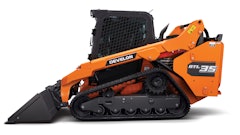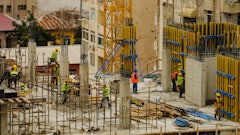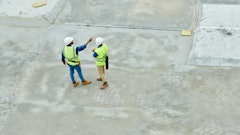
When is it appropriate to wear insoles when using work boots?
Always.
“I highly recommend adding insoles to work boots,” said Dr. David Chen, a south Florida-based podiatrist. “Most if not all work boots are designed primarily for protection of the toes and feet from external trauma with only second thought paid to cushioning and comfort.
“A custom molded insole is highly recommended. However, many good over-the-counter insoles will suffice as well to prevent plantar fasciitis and metatarsalgia.”
Dealing with Rough Working Conditions
Upstep pointed out work boots are constructed to be rigid and tough to protect the feet and ankles from falling objects on the work site. The downside: this can lead to foot or ankle discomfort. It also is a factor in foot and lower leg fatigue as well as heel pain due to the weight of the boot and rigidity of the sole.
Orthotics are used in work boots to support the sole, prevent pressure areas against the sole of the work boot, and aid in shock absorption through the heel while providing a stable and comfortable surface for the feet.
In addition to plantar fasciitis, foot conditions commonly caused by work boots include heel spurs, Haglund’s deformity, and bunions. Insoles will typically last between six months and a year, depending on the frequency of use and the type of material used to create the orthotic. Orthotics used regularly for long periods may need to be replaced sooner.
Upstep noted that determining for which condition a worker intends to use orthotics is the first step in managing a foot condition, followed by choosing the best insoles for people on their feet all day long.
Types of Insoles for Work Boots
Dr. Scholl’s offerings for work boots and shoes include the Work Insoles with Massaging Gel, featuring Responsive-Wave Cushioning which adapts to provide added comfort and energy; a supportive arch to help evenly distribute weight and extended gel cushioning reducing the impact to muscles and joints on hard surfaces.
Other choices include Superfeet’s COPPER orthotic shoe insert, featuring a pressure-sensitive, memory foam layer that molds to the contours of the foot and is designed to replace the removable sock liner in roomy- to moderate-fitting footwear. It can be trimmed to fit the shoe size. The insole features a heel cup; low arch Superfeet shape; durable construction for up to 12 months or 500 miles, whichever comes first; organic odor-control coating, stabilizer cap and cushioning memory foam.
Jobsite’s Heavy Duty Boot Insoles are designed for long-standing work. They are designed to be shock absorbing with molded arch support for extra comfort and support. The insoles feature reinforced metatarsal support for ball of foot comfort and a deep, high-walled heel cup to stabilize the foot. The insoles also feature an extra-thick heel cushion to absorb heel shock and offer comfort. The insoles feature breathable, anti-wicking material for better foot health. A top cover reduces foot friction by reducing foot temperature and sweat.
Dr. Jill’s Foot Pads provide different insoles that are appropriate for construction boots. Some provide cushioning for standing long hours in a day. Others are firm insoles that are beneficial because they stiffen the sole of the shoe to limit foot and toe injuries.
These products include:
- Carbon Stabilizer Plates are used to stiffen the sole of the shoe and limits the range of motion of the forefoot and midfoot to make the shoe non-flexible. They feature a small amount of flex to enable forefoot roll-off and toe-off. The 1/8-in. thick plates are constructed to limit dorsiflexion at the MP joints. They also immobilize the toe joint to prevent it from bending during walking.
- Full Spring Steel Insoles are ideal for preventing Turf Toe and other foot problems requiring a rigid foot bed. The plates are constructed to limit dorsiflexion at the MP joints.
- Half Spring Steel Insoles are ideal for preventing Turf Toe and other foot problems requiring a semi-rigid foot bed. The plates are constructed to limit dorsiflexion at the MP joints.
- Memory Foam Insoles are made with memory foam for a memory fit. They are designed to form a custom fit and comfort and are ideal for ball of foot cushioning. They are lightweight and durable and are trimmed to fit the shoe at the toes.



























